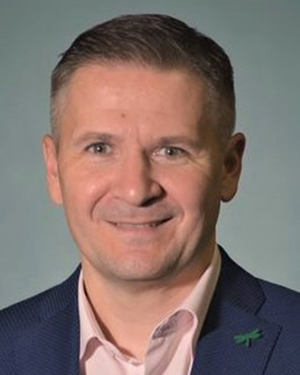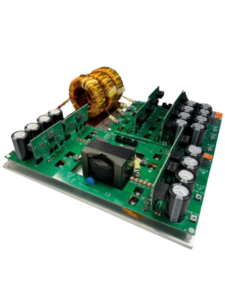Energiatõhusa, kerkse ja nutika elektrifitseerimise uurimisrühm
Energy efficient, resilient and smart electrification research group

Research professor Dmitri Vinnikov
Introduction
This workgroup is mainly composed of the members of TalTech Power Electronics Group (PEG) led by Dr. Vinnikov (IEEE Fellow, Full Member of the Estonian Academy of Sciences). PEG was established by D. Vinnikov in 2006 and is now the largest research center on applied power electronics in Baltic countries. PEG focuses its research on the development and experimental validation of innovative energy-efficient power electronic systems for such demanding applications as renewable energy, residential microgrids, electromobility, V2X and P2X, telecom, and aerospace. Thanks to its remarkable achievements in applied power electronics, PEG was awarded the title of European Competence Centre of Power Electronics and, since 2012, is an active member of the European Centre for Power Electronics (ECPE).
Main highlights of PEG:
- Well-experienced and dynamic team of young researchers and engineers (1 Research professor, 4 Sr. Researchers, 1 Sr. Lecturer, 4 Postdocs, 1 Engineer, and 8-10 PhD students)
- Long-lasting experience in the applied design of power electronic systems for different power ranges and applications
- Strong record of scientific publications (over 60 annually published research papers)
- Diverse patent portfolio, development, prototyping, and joint product development with Estonian and European industrial partners
- Active participation in EU-funded programs and joint research undertakings.
Competence
In the Center of Excellence, the main contribution of the group will be related to the development and experimental validation of new methods and technologies for the Beneficial Electrification of buildings to enhance their energy efficiency, energy independence and resilience, as well as their optimal use for alleviating the power quality and supply security issues in the utility grid. We hypothesize that the wider adoption of Direct Current Power Distribution (DCPD) technology in residential buildings and neighborhoods, along with the smart control of local renewable power generation, storage and consumption, will be one of the critical tools for addressing the Energy Trilemma by Beneficial Electrification.
To maximize energy savings, PEG will tackle various challenges of developing solutions for DCPD-based smart prosumer buildings and neighborhoods. Our research agenda addresses high-risk/high-gain interdisciplinary research based upon 3 interlinked directions (DCPD technologies, energy storage systems, grid-interactive residential energy management) enabling Beneficial Electrification, which will address different challenges while serving the common objective. We will propose and experimentally validate a set of entirely novel concepts, methodologies, services, and tools that will allow further energy performance enhancement of buildings.
Proof-of-concept demonstrators will be developed to strengthen the practical and industrial relevance of this research line, thus providing tangible examples of how the research findings could be embedded into innovative power electronic systems and technologies for the next generation of highly energy-efficient buildings. The proposed solutions will be scalable, affordable, and user-friendly, create benefits for end-users, increase interest in the technologies, reduce the use of grid infrastructure, and contribute to energy transition goals, considering beneficial electrification principles.
Furthermore, a detailed regulatory analysis will be performed to identify the main barriers to developing and adopting residential DCPD as an enabling technology that serves the “Energy Efficiency First” principle of the EU. The evidence-based technical recommendations resulting from our study will be shared with Estonian and European standardization communities. In addition, the workgroup members will contribute to the topics related to the net-zero heating/cooling concepts, where the HVAC devices are backed up with PV and energy storage to maximize the self-consumption and energy independence of buildings.
Moreover, the workgroup members will take part in the development of new methods and business models to intensify the use of onsite generated renewable energy and existing energy storage capacity at the building and community levels.
Research infrastructure | Short description |
TalTech Power Electronics Laboratory | The laboratory is fully equipped for prototyping and benchmarking power electronic converters from a few watts to over 10 kilowatts for both AC and DC applications. Power Electronics Laboratory is the only facility of this scale and level in the Baltic states, and it competes with the best power electronics labs in the EU. Lab capabilities:
|
| Being one of the steps toward achieving climate neutrality of the TalTech campus by 2035, this 18 m2 movable living lab is the first direct current (DC) building in the northern countries. Here, various DC technologies are implemented and tested, aiming to develop a future-proof DC microgrid for households. This technology will change residential energy supply principles, optimize energy flows, and increase the energy efficiency of future buildings. This is the only setting in Baltic states where DC solutions are continuously piloted to demonstrate the benefits of DC technology for Beneficial Electrification of buildings.
|













